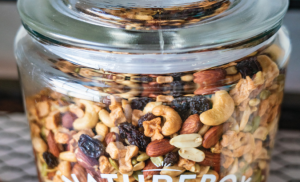Hi, Welcome
Welcome back
by Loren McDonald, Op-Ed Contributor, June 30, 2016
Of course they aren’t. If you’re reading this column in email, you might have used the MediaPost Email Insider sender name and subject line words you saw in the inbox to decide to open the message instead of deleting it.
But I’m wondering how well text-centric email designs serve today’s consumers, whose attention spans have been going through a well-documented decline, and whether it’s time to shift more of your email messaging from words to images.
Eight seconds or less to engage
A
2015 study by Microsoft found the average attention span dropped from 12 seconds in 2000 to eight seconds, attributing the change to more mobile phone use and the distractions from multiple media streams.
In my analysis across several hundred clients, on average 47% of commercial emails received by subscribers were “Deleted/Glanced” (less than two seconds) and “Skimmed” (two to less than eight seconds).
Visuals over words?
When the brain can see images that last for just
13 milliseconds, are words still the right way to engage time-compressed, distracted consumers?
The brain takes longer to process words because it must process each letter or
word shape and then an entire phrase or sentences instead of recognizing a single image. Visuals also stimulate parts of the brain that heighten imagination and creative thinking, and provide visual cues that help humans decode text.
Optimizing email for shorter attention spans
This and other research seem to lead to one conclusion: Make your emails more visual (images, graphics, video, animated GIFs, emojis, etc.) instead of relying heavily on text.
That doesn’t mean reverting to one giant image that looks like a magazine ad. Rather, as you retool your emails for mobile readers, look for new ways to use images and visuals for capturing attention in both the inbox and the message content.
You know what works best for your audience, but below are some examples of areas and approaches to test:
1. Subject lines: An all-emoji subject line? Probably not, but you can start using emojis more strategically, and test styles and approaches that increase the comprehension of, and emotional reaction to, your subject-line words.
2. Preheader text: While various email clients handle pre-header text differently, none will present images or emoticons. So, optimizing the text is your only option. Try testing copy in your preheader that sets up your primary image/CTA in the email, versus optimizing for opens.
3. Message body: First, make sure you have reduced the clutter, distractions and content that detracts from your primary goal for the message. Second, test increased use of images, animated GIFs and video (presented as an image or animated GIF); and the layout and interaction and placement of text in relation to visuals.
Test using imagery that spurs emotion, incorporates the benefits of using the product/service, in context, shows multiple product views or directs attention to copy.
4. Call to action: Your CTA buttons are, of course, already mobile-optimized: big, wide, finger-friendly and “bulletproof” (recreated with HTML if the image-based button does not render). Consider testing highly recognized visual icons (
shopping carts, phones, sale tags, magnifying glass, download arrows, shopping bags, etc.) along with descriptive text in buttons.
5. Administrative footer area: Turn this text-heavy area into a frictionless visual and mobile-friendly functionality that makes it easy for subscribers to discover how to update their email address or profile, call customer support, find shipping and return policies, and even unsubscribe.
Testing
When testing any of these approaches, analyze results across your different customer segments and metrics such as opens, click-to-open rates, conversions, revenue per email, etc.
A more visual approach might produce better results with some product or service types, lower conversions with certain demographics, or a lower open rate — but more conversions.
Any results you can share? Let me know in the comments.
Until next time, take it up a notch.
MediaPost.com: Search Marketing Daily
(50)
Report Post






